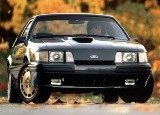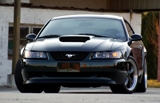Car Care & Tips
Polishing & Waxing
Written and Photographed by James Dolan
There is plenty of confusion about the differences between a polish and a wax. Often the two are used interchangeably and that is incorrect. This confusion is most likely due to the fact that there are plenty of store bought-products that both polish and protect the vehicle's finish at the same time. With out getting too complicated a polish is used to brighten, shine and hide minor imperfections in a vehicles finish. A true polish has almost virtually no protective capabilities at all. On the other hand a wax
or paint sealant will have less ability to shine or brighten but will help protect the finish from sun and weather damage. It will also prevent nasty things like bugs, tar and tree sap from becoming bonded to the surface of your paint making removal easier. This “barrier” will also help bird droppings, acid rain and other environmental fallout from eating away at your paint.
So why not just go out and buy a product that both polishes and protects the paint all in one? You can do that but those products are a compromise. Those products are ok, but they are a compromise and neither polish nor protect you finish as well as separate polish and paint sealant. A high quality polish and paint sealant should be used as separate products for best results. Also not all products are created equal and just because a product is expensive do not mean it’s the best buy either. My advice is try different products and whatever works best for you is what you should use. Ultimately you will want a product that is easy to apply and remove and leaves a deep non hazy non smeary shine that will last a minimum of a month with weekly washing.
Too many times I have seen people spend a full day (or days!) polishing and waxing a vehicle. On average it takes me 2 hours from start to finish completing all the steps and having a show car like shine. Before you start you will need the following list of materials.
- Clay bar
- Liquid quick detailer
- Automotive paint polish
- Automotive wax or paint sealant
- Polish/Wax applicator pads
- Soft clean towels
- Orbital polisher along with 4 cloth bonnets (optional)
You will need to find a shady area to park the vehicle. You should never polish and wax a vehicle in direct sunlight or extreme heat since the products will not work properly or will be difficult to remove from your car. It is also important to remember that these products should never be used on rubber or non painted plastic trim with a rough finish, not unless you want one hell of an ugly mess on your hands!
Step 1: Wash & Dry
First thing is to thoroughly wash and dry the vehicle. Make sure that the vehicle is completely dry before continuing with the other steps as any water will make the other processes much harder. For detailed infomation on how to properly wash a vehicle, please cick on the link and read my article Vehicle Washing.
Step 2: Clay Bar
A clay bar is designed for removing surface contaminates and restoring a smooth surface to you paint finish. This not only makes you paint super smooth but will also make polishing and waxing easier and more durable. A non abrasive clay bar will safely remove paint over spray and environmental contaminates quickly and easily. The first time I saw this process I was amazed. You can feel the difference immediately and you will be shocked at how “dirty” a freshly washed car really is! To aid the clay bar do its job effectively and for lubrication purposes you will need a liquid quick detailer spray.
Using the clay bar is very easy but you do have to follow a couple of rules. First DO NOT DROP THE CLAY BAR! The clay bar is like a magnet for dirt and rocks; once you have dropped it on the ground it is no long useable. Always use the detailer spray as a lubricant. The quick detailer will allow the clay to smoothly glide over the surface of the paint and aides contaminate removal. Also you do not need to use the entire bar. Break off a usable piece that is easy to handle and you are ready to go.
Now all you need to do is mist the quick detailer onto the surface of the paint in one section of the car and glide the clay over the surface. It is that easy. Do one section of the car at a time until you have done the entire vehicle. After you complete a panel or section work kneed the clay so that you will have a clean surface on the clay for the next area of the vehicle. You can even use the clay on the glass if you wish. I have also used the clay bar on smooth alloy or chrome wheels to give them a smooth clean finish as well.
Step 3: Polishing
Next comes polishing the paint. Polishing gives a shine to the paint and also it can hide small imperfections like swirl marks and light scratches. A good polish will also “feed” the paint and help prevent the paint from drying out and cracking, thus prolonging the service life of the finish. There are two basic techniques that can be used when applying and removing the polish. You can do it by hand or you can use an orbital polisher. Either way is effective but using an orbital polisher is a little quicker and allows the polish to be worked into the paint a little more effectively.
Polishing by Hand
Start off by applying a small amount of polish to a clean cloth applicator pad and apply the polish to one panel at a time. Start in the middle of the panel working out to the edges as this prevents the polish from building up in the crevasses and gaps in the body. Take care around moldings and trim that can be stained or become a trap for the excessive polish. Apply the polish to one panel at a time; once the panel is covered remove the polish with a clean soft towel. Continue this process until every panel of the vehicle as had the polish applied and removed. The secret to a good polish job is to use the polish sparingly. It is tempting to load the applicator pad with product but you really are not doing any good. In fact you are just making more work for yourself because the polish will be more difficult to remove and you risk the chance of having a smeary finish at the end. Go by the rule less is more.
Polishing with an Orbital Buffer
Applying polish with an orbital buffer is a simple process. Attach a clean cloth bonnet to the buffer them apply the polish to bonnet being careful not to apply too much product. Then simply run the buffer over the painted surfaces of the vehicle. Be careful to avoid all trim and emblems or anything that could possibly be damaged by the buffer. When using a buffer you may apply the polish all the vehicle at one time. Once the polish is applied remove the bonnet and use the bonnet to polish the areas that the buffer could not reach. Then to remove the polish follow the same procedure with a clean cloth bonnet attached to the buffer. Then inspect the vehicle for any traces of polish that may have been missed and remove with a clean cloth or towel.
Step 4: Waxing/Sealing the Paint
Once you see the results after polishing the vehicle you maybe tempted to skip the waxing/sealing the paint. Skipping this step would result in your polish being washed away with the first wash or rainstorm. In addition you will not get the added protection for the environment. Modern paint sealants have polymers that bond to the finish and not only lock in the shine of the polish but also offer long lasting protection from UV ray, oxidation, corrosion, and degradation of the finish.
To apply the wax use the same process as used to polish the vehicle. Again you can wax the vehicle by hand or use an orbital buffer. Then stand back and enjoy the results of your labour. You will be surprised at how well your old ride will gleam in the sunlight.
Most Popular Articles

Japanese Nostalgic Vehicles: The next trend in classic cars
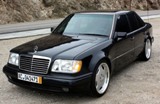
Five Sports Sedan's I'd Love to Own
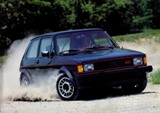
Hot Hatchbacks From the 1980's

Volvo 200 Series: An Unappriciated Classic

Triumph TR-6: Music to Anyone's Ears
Fifty Years of Mustang

1999-2001 Ford Mustang SVT Cobra

2003-2004 Ford Mustang SVT Cobra
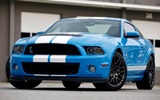
2010-2014 Ford Mustang Shelby GT500

2012-2013 Ford Mustang Boss 302










